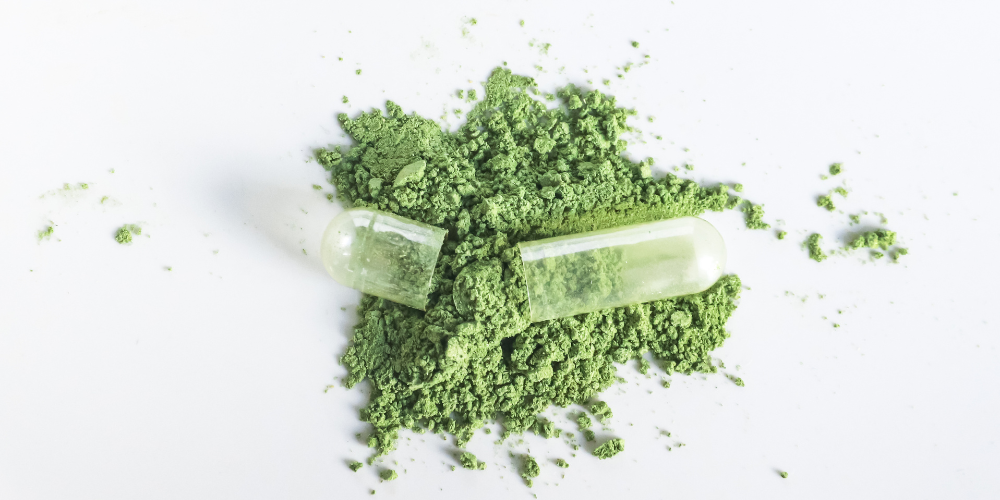
Free Shipping on Orders Over $75!
JOIN OUR EMAIL LIST FOR 20% OFF, weekly coupons up to 30% OFF
What Does Kratom Do? 7 Effects of Kratom on Your System

If you are curious about what does kratom does, this guide will answer all of your questions in the next five minutes. Kratom is a botanical product that has been growing in popularity in the West for years because of its soothing, calming, or energtic effects.
When consumers ingest kratom tea or smoke the dried, crushed leaves, they can produce either stimulating or sedative effects depending on the dose. Little is known about how the plant has these effects, but researchers believe they are related to the plant’s soothing and calming alkaloids.
Some users report feelings of euphoria, but few are aware of the full range of impact kratom has on the body and mind. Not all of these effects are beneficial, so users should educate themselves before taking kratom to make informed decisions.
What Does Kratom Do?

Researchers have not yet spent enough time investigating kratom to understand fully how it works. They know it contains the active ingredient mitragynine, and most think that this compound binds to opioid receptors in the brain to produce stimulant or sedative effects. That being said, kratom is not an opiate.
Most of the information about what kratom does currently comes from anecdotal accounts rather than rigorous scientific research. Users report feeling energized, focused, and euphoric when taking small doses of kratom. They also say relaxing and sedative effects at higher doses.
Kratom is a famous botanical agent for soothing effects. Those who use it usually report feeling relief and calm.
Now that you have a general idea of what kind of subjective experience kratom produces let’s take a look at the seven effects of kratom:
1. Kratom Effects on Your Pupils
Using kratom can cause pupil constriction or miosis. This refers to the reduction in the size of a consumer’s pupils under standard lighting. Pupil constriction can make it more difficult for people to see in low-light conditions.
2. Kratom Effects on Your Brain
There are two compounds found in kratom leaves that interact with opioid receptors in the brain: mitragynine and 7-a-hydroxymitragynine. These substances behave as partial opioid receptor agonists or antagonists, depending on which receptors’ activities are being analyzed.
Kratom also functions as an agonist within the brain’s norepinephrine and serotonin receptor systems and can serve as an NMDA receptor antagonist, causing dissociative effects at high doses.
3. Kratom Effects on Your Liver
As more consumers have begun to turn to kratom for soothing and calming effects, incidences of liver damage have been on the rise. So far, researchers don’t know what about the plant could be causing liver damage.
Still, several case studies indicate that consuming kratom tea in excessive amounts can lead to liver injuries, including acute hepatitis. In most cases, liver damage caused by kratom use is reversible.
4. Kratom Effects on Your Blood Pressure
Kratom trees are in the same family as coffee, so it should come as no surprise that ingesting the leaves can impact consumers’ blood pressure. Like coffee, it can increase consumers’ heart rates.
It can also increase blood pressure, causing hypertension in some consumers. It’s best for those with preexisting hypertension to stick to low doses of this plant to reduce heart disease and strokes.
5. Kratom Effects on Your Stomach
Since some people have sensitive stomachs, many plants can cause trouble when taken on an empty stomach. Some consumers report nausea, vomiting, constipation, and diarrhea.
The easiest way to avoid these unwanted side effects for those with stomach issues is to take kratom only after eating a healthy meal and stick to low doses that are less likely to cause digestive upset.
6. Kratom Effects on Your Kidneys
Kidney damage is a secondary problem in regular kratom users, not a primary side effect. Those few consumers who experience acute liver problems wind up placing more strain on their kidneys to filter out toxins, increasing the risk of renal failure.
Anyone experiencing worrying symptoms like dark urine or jaundice should stop using kratom immediately and schedule liver and kidney function tests with his or her doctor.
7. Kratom Effects on Your Thyroid

There is some limited evidence that long-term kratom use may cause thyroid problems. Some researchers believe that the mitragynine found in this botanical substance might reduce the thyroid gland’s ability to respond generally to thyroid-stimulating hormones.
This assumption is based on one widely publicized case study of a patient who developed severe primary hyperthyroidism after prolonged kratom use. More targeted research will need to be performed to show causation.
Is Kratom Safe?
As you have already seen, the long-term use of massive doses of kratom can produce unwanted side effects and adversely affect your health. It’s essential to recognize that every plant and even pharmaceutical drug has adverse effects on the body when taken in excessive quantities. However, kratom has not studied in-depth.
So far, most anecdotal evidence about the potential ill effects of kratom points to problems with combining the plant with other drugs or alcohol. When taken in reasonable doses, kratom may produce minor side effects that resolve within a day. Very few consumers report severe complications that require medical treatment, especially in comparison to those using opioid drugs to treat chronic pain conditions instead.
Like actual opioids, kratom does come with some risk of dependence and addiction. Withdrawal symptoms can include anxiety, irritability, depression, and insomnia, but fewer than 10% of consumers who report regular kratom use become physically dependent to the point where withdrawal symptoms could occur. Those who plan to use kratom should also note that the severity of withdrawal symptoms associated with kratom is generally much lower.
Like all herbal supplements, kratom is also unregulated by the FDA. That means it’s up to consumers to do their homework regarding the purity and concentration of their products. Purchasing kratom from a reputable vendor that is willing to provide lab results and sticking to recommended dosages can reduce the risks associated with kratom consumption.
How Often Should I Use Kratom to Avoid Long Term Side Effects
Chronic kratom use can lead to more substantial side effects. They can include constipation and loss of appetite, leading to unintended weight loss, insomnia, hyperpigmentation of the cheeks, and itchiness. The long-term effects of using kratom haven’t been studied very well yet, so the prevalence and severity of these side effects are not very well understood.
Every person’s tolerance to this popular substance will be different; therefore, don’t assume that you can take the same dose as your more experienced friend without producing harmful side effects. Instead, take things very slow and expect to develop a tolerance over time.
Those who want to avoid the risk of both long-term side effects and developing a physical dependency on kratom should take only the lowest effective doses on an as-needed basis. You’ll have to tailor your dosing schedule to your own needs, including your personal preference when it comes to risk aversion.
Most experienced consumers take kratom no more than once or twice per day. While the effects tend to wear off in seven to eight hours, leaving ample time between doses makes it less likely that you’ll develop a physical dependency or a high tolerance. It can also reduce the risk of adverse effects.
Whenever you take kratom, you should pay attention to how your body responds. Consider keeping a log that details each instance of consumption, how much you took, how effective the dose was, and the side effects you experienced. Keep in mind, you can always increase your amount the next day, but you can’t do anything about it if you’ve already taken more kratom than your body can handle.
Did like a post? Share it with:
nimesh
Search
Table of Index
Post Categories
Related Posts
Where to buy kratom near me is a question that many users find themselves asking when looking for quality products
Finding the best Kratom Powder near me can feel difficult with so many options available locally. But steering through stores
Are you one of those scrolling on the internet for ‘7ALKS near me’? Are you looking for 7ALKS, 7-Hydroxy 15mg
7OH, or 7 hydroxymitragynine, is a significant alkaloid found in kratom that plays a crucial role in its effects. This
Curious about 7OH kratom? You’re not alone. As more people explore different botanical products, 7 hydroxymitragynine (7OH) has emerged as
Have you ever accidentally over-consumed kratom and experienced a hangover? Well, the good news is they’re easily avoidable. A kratom
Disclaimer
Must be 21 years or older to purchase kratom. Products are not for internal use. The US FDA Has Not Approved Kratom as a Dietary Supplement. We do not ship to the following states, cities and counties in the US where Kratom is banned Alabama, Arkansas, Indiana, Rhode Island, Tennessee, Vermont, Wisconsin. Sarasota County, Union County, Denver, San Diego, Louisiana. All sales should be 100% U.S. sales only.
Consult with a medical professional before use if taking prescription medication or affected by a serious medical condition. Always seek medical advice before using this or any other supplemental dietary product. These statements have not been evaluated by the Food and Drug Administration (FDA).
© 2025 Kratom Krush. All Rights Reserved. Operated by XXIV LLC Privacy PolicyTerms & Conditions











